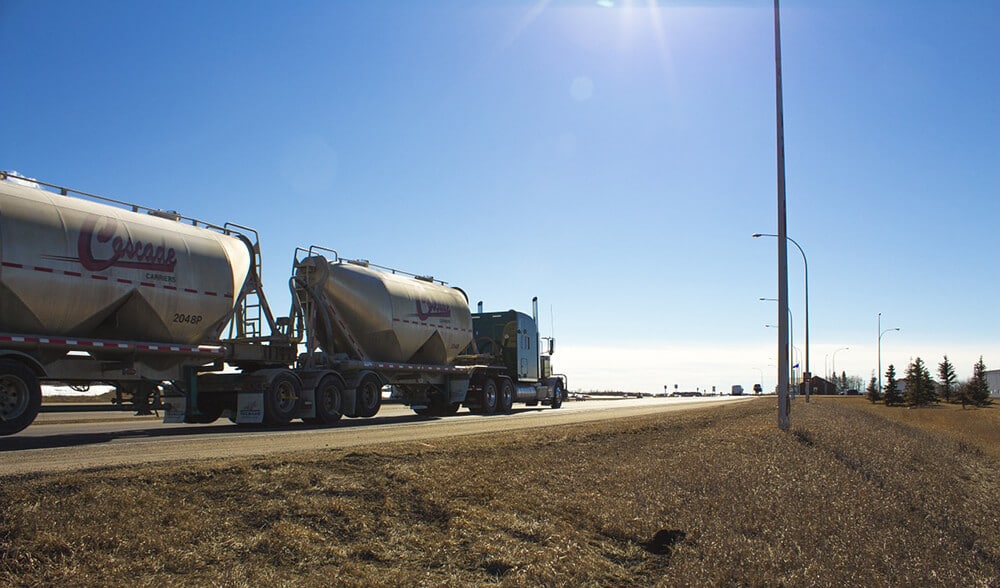
It’s a common occurrence to drive alongside tractor-trailers on highways and local roads. Even though this is something many of us do every day, many motorists fail to realize the size of trucks’ blind spots or the dangers associated with traveling in one. Becoming familiar with the scope and locations of these areas can help prevent deadly accidents.
Locations and Dangers of Trucker Blind Spots
Commercial vehicles have large blind spots around all four sides. When passenger vehicles or motorcycles are in these zones, truckers cannot see them. This can quickly create a dangerous situation. It’s important to be aware of trucker blind spots, so you can drive responsibly around them. As a general rule, if you can’t see the driver in their mirror, it’s likely they cannot see you.
- Front Blind Spot. This blind spot is directly in front of the truck and is caused by the engine. Depending on the truck’s design, the blind spot typically extends for 20 feet from the front of the vehicle. This blind spot is most dangerous for passenger vehicles who are merging in front of a truck. If the trucker does not see the vehicle or sees it but is unable to stop in time, the smaller vehicle could be run over.
- Side Blind Spots. There are blind spots on the left and right sides of large trucks. On the left, the driver’s side blind spot extends for one entire lane, starting at the front right corner of the door. On the right, the blind spot is larger. It extends from the passenger door and out as far as 100 to 200 feet behind the truck. It spans across two lanes of traffic. These zones are especially dangerous during passing and turning.
- Rear Blind Spot. Similar to the location in the front, the rear blind spot extends directly from the back of the truck. It extends for approximately 30 feet, depending on the design of the tractor-trailer. These zones become dangerous when traveling uphill and downhill when truck speeds vary the greatest.
How to Avoid Being in a Tractor Trailer’s Blind Spot
Now that you know about the locations and dangers associated with large trucks, it’s important to be aware of how to avoid those zones. Passenger vehicles and motorcyclists should follow these simple actions to aid in the prevention of serious collisions.
- Pass Safely. When passing, make sure you are back far enough that you can see the driver in your side mirror. This will ensure they will see your signal to pass and know that you are beside them. Move into the left lane and accelerate so that you can pass promptly. Avoid lingering in the blind spot. Don’t pass large trucks on hills or slopes where they tend to pick up speed or slow down depending on the direction. If a truck is passing you, stay to the right and slow down.
- Avoid Cutting In Quickly. After you’ve passed a truck, you need to be just a cautious merging back to the right. It’s dangerous to cut off a commercial vehicle because of the front blind spot. If you cut in too quickly, you may be in the blind spot and the truck may be unable to slow down quickly enough to avoid a crash.
- Don’t Tailgate. Tailgating a truck puts you in the back blind spot. The deadliest truck accidents occur when passenger vehicles collide with and get wedged under the back of a semi. Also, remember to keep your distance when on an upgrade because a truck could roll back a short distance after stopping.
- Anticipate Wide Turns. Large commercial vehicles need extra room to turn. In general, a tractor-trailer’s turning radius is 55 feet. They may swing wide or start a turn from a middle lane. Stay back and behind the vehicle until it has turned. Never try to squeeze by or get between a turning truck and a curb.
- Be Patient. Tractor trailers need time to accelerate, especially on a steep incline. Remain calm and patient. Avoid honking, aggressive driving, or weaving – as those actions can result in dangerous distractions and crashes.
At DiPiero Simmons McGinley & Bastress, PLLC, we understand how severe the consequences can be as the victim of a tractor-trailer wreck. Significant property damage, life-changing injuries, and even death can occur. Our team of attorneys has the experience needed to guide you through the legal process, so you can seek compensation and get your life back in order. To learn more about your legal rights and options, get in touch with us today.







